清迈艺术画廊
Chiang Mai Art Gallery
该艺术收藏画廊坐落于泰国北部城市 — 清迈,画廊的内部由一系列形态有机的竹编亭组成,外部则被丰富的花园空间、室外雕塑,以及华丽的水景景观所包围。
An Art Collector’s gallery in Chiang Mai, Northern Thailand consisting of several interior pavilions enclosed by intricate gardens with exterior sculptures and ornate water features.
▼项目概览,overall of the project © William Barrington
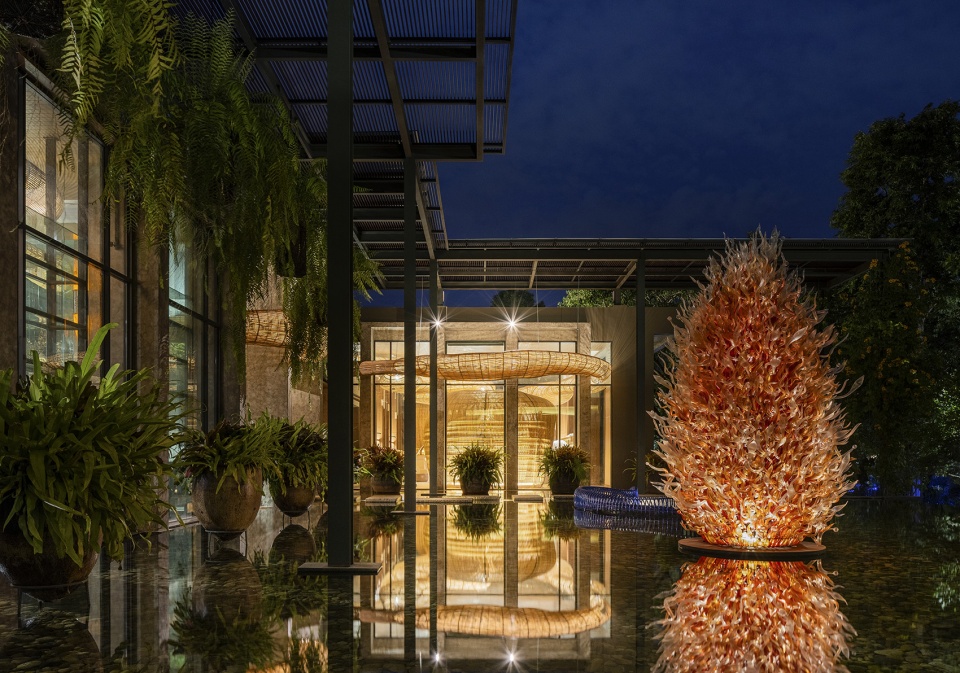
Enter Projects Asia事务所受业主委托,利用天然材料为画廊内部设计定制了一系列艺术作品展陈装置。该画廊展出了各种从国际范围网罗而来的银器、精美的瓷器,以及东南亚最全的Wedgwood英式骨瓷餐具收藏品。项目的业主是一位狂热的收藏家,他致力于将毕生的心血融入到这座画廊中,并在此展览其50多年来收集的珍宝。
Enter projects Asia were commissioned to design the display of bespoke art works, using all natural materials. The international collection of silverware, fine china and porcelain includes the largest Wedgwood collection in South East Asia. The owner and avid collector sought to contextualize a lifelong ambition to exhibit the treasures gathered over a 50 year period.
▼画廊庭院夜景,night view of the gallery’s garden © William Barrington
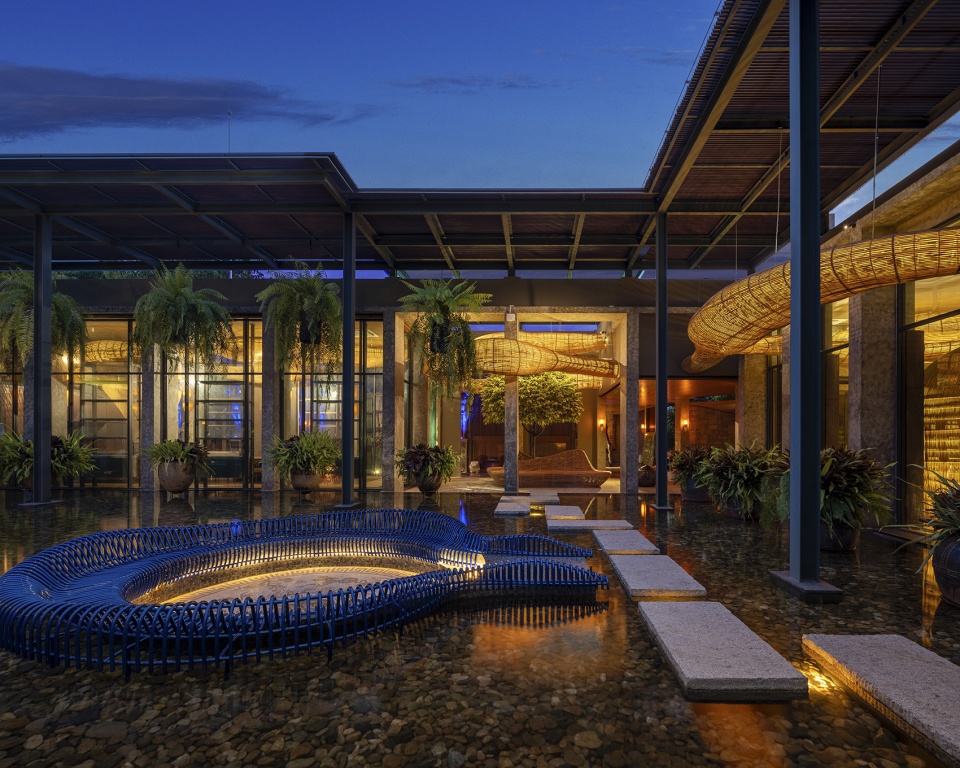
▼外观夜景,night view © William Barrington
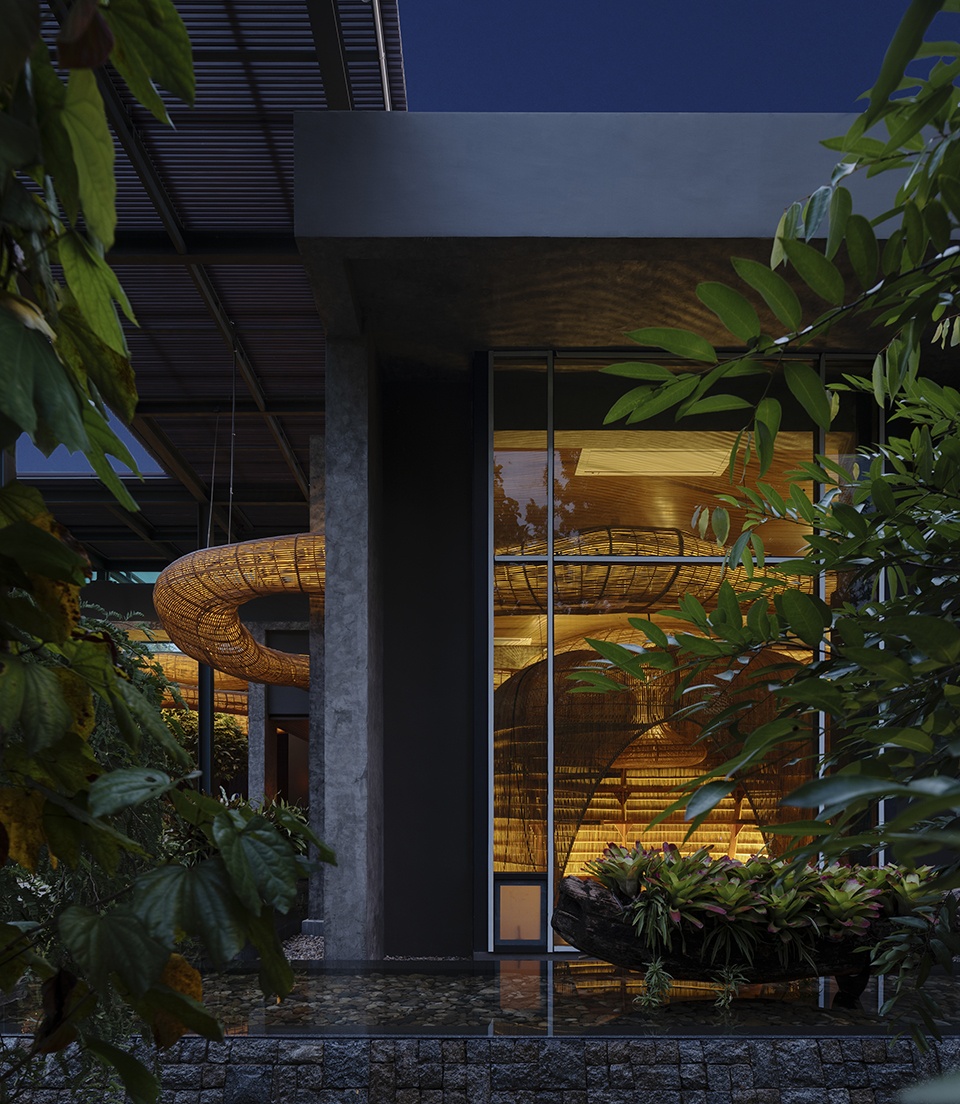
在Enter Projects Asia介入前,画廊空间略显传统与简陋,而设计团体采用3D几何语言与传统泰国工艺为画廊进行了分区,并提供了照明与座位装置,以事务所标志性的风格为画廊注入了勃勃生机。事务所总监Patrick Keane表示:“我们试图创造一种沉浸式的体验,旨在赋予空间传统艺术画廊所不具备的温暖和深度。”
Traditionally a clinical space in which art objects meet an audience, Enter Projects Asia were challenged to bring life to the gallery, with zoning, lighting and seating in their signature style blending 3D geometries with traditional Thai craftsmanship. “We sought to create an immersive experience, giving the space a warmth and depth uncharacteristic of conventional art galleries” states Patrick Keane, Enter Projects Asia Director.
▼藤编装置衔接了室内外空间,
the rattan devices connect the interior and exterior spaces © William Barrington
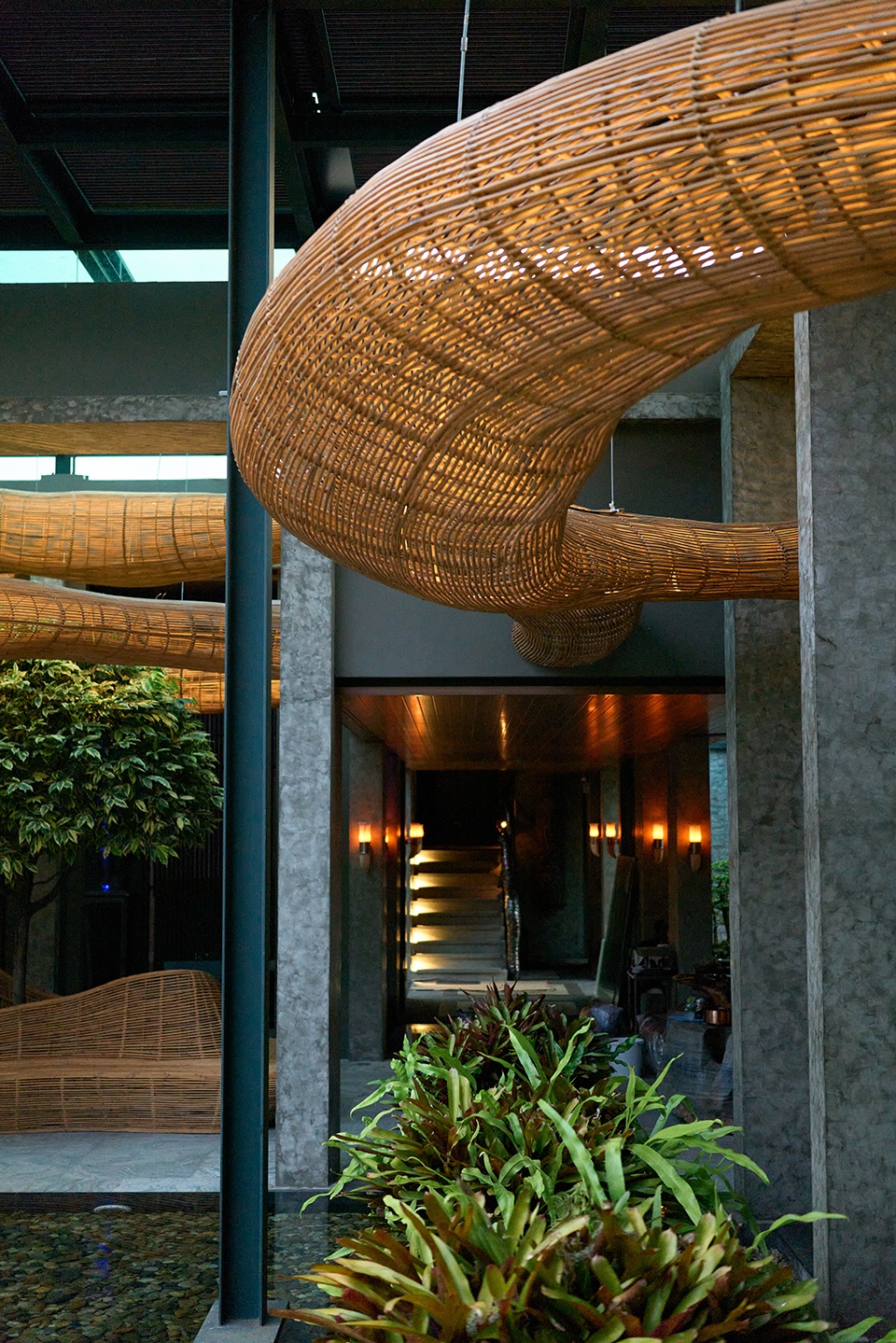
▼藤编花池与座位呼应了悬吊的装置主体,
the planter and the seating echo the main body of the suspended installation © William Barrington
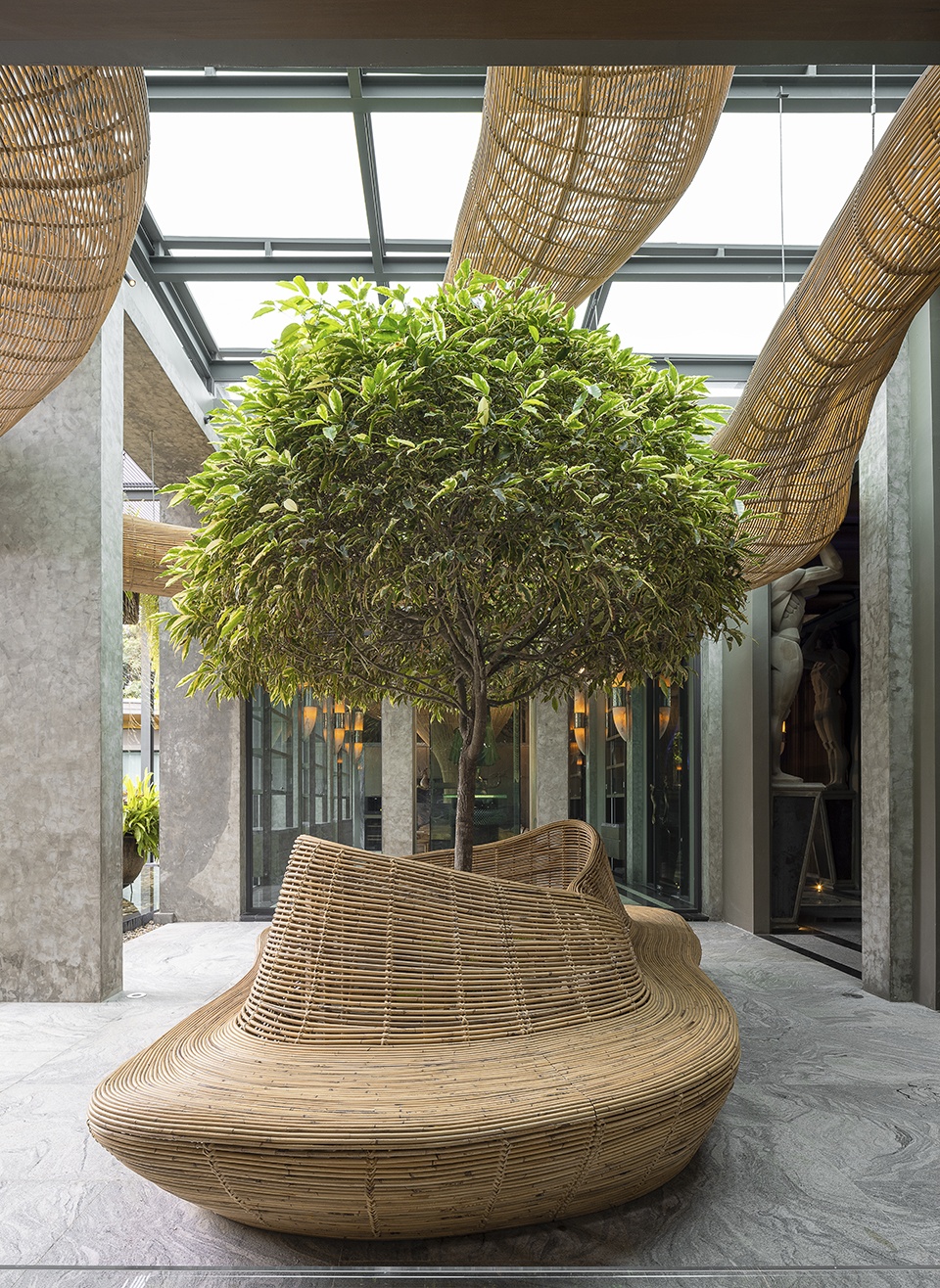
▼座椅细部,details of the seat © William Barrington
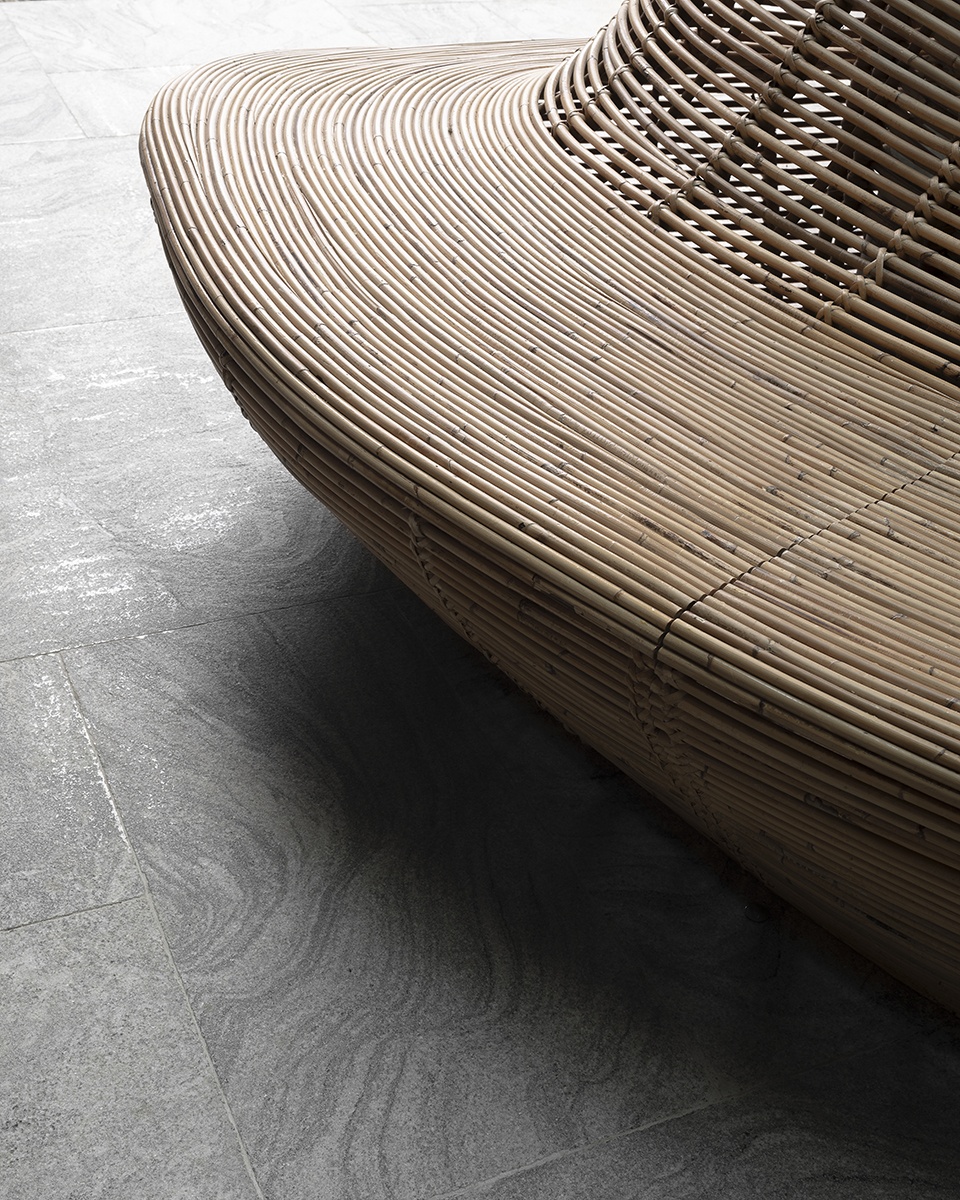
设计概念在整个空间中流动,参数化技术造就了动态的装置形态,单一的视角无法完全展示出装置的全貌。设计团队使用专业软件来模拟云和蒸汽的运动轨迹,在严谨的模型推演下,藤条结构能够无缝地编织在画廊不同的区域中,将室内空间与室外空间紧密地联系在一起,最终形成一系列具有包容性的空间结构,迎接着将要展出的藏品,成为展览的视觉与空间枢纽。
▼分析图,analysis diagram ©Enter Projects Asia

The concept centers on contemporary design ideologies of fluid space, parametric work techniques and dynamic forms that cannot be viewed from a single vantage point. Using specialist software to simulate the movement of clouds and steam, the rattan structures thus weave their way seamlessly through the various zones, exterior and interior, culminating in a series of pod structures which serve as armatures for the forthcoming collection.
▼藤编展览空间舱体,the rattan exhibition space pod © William Barrington

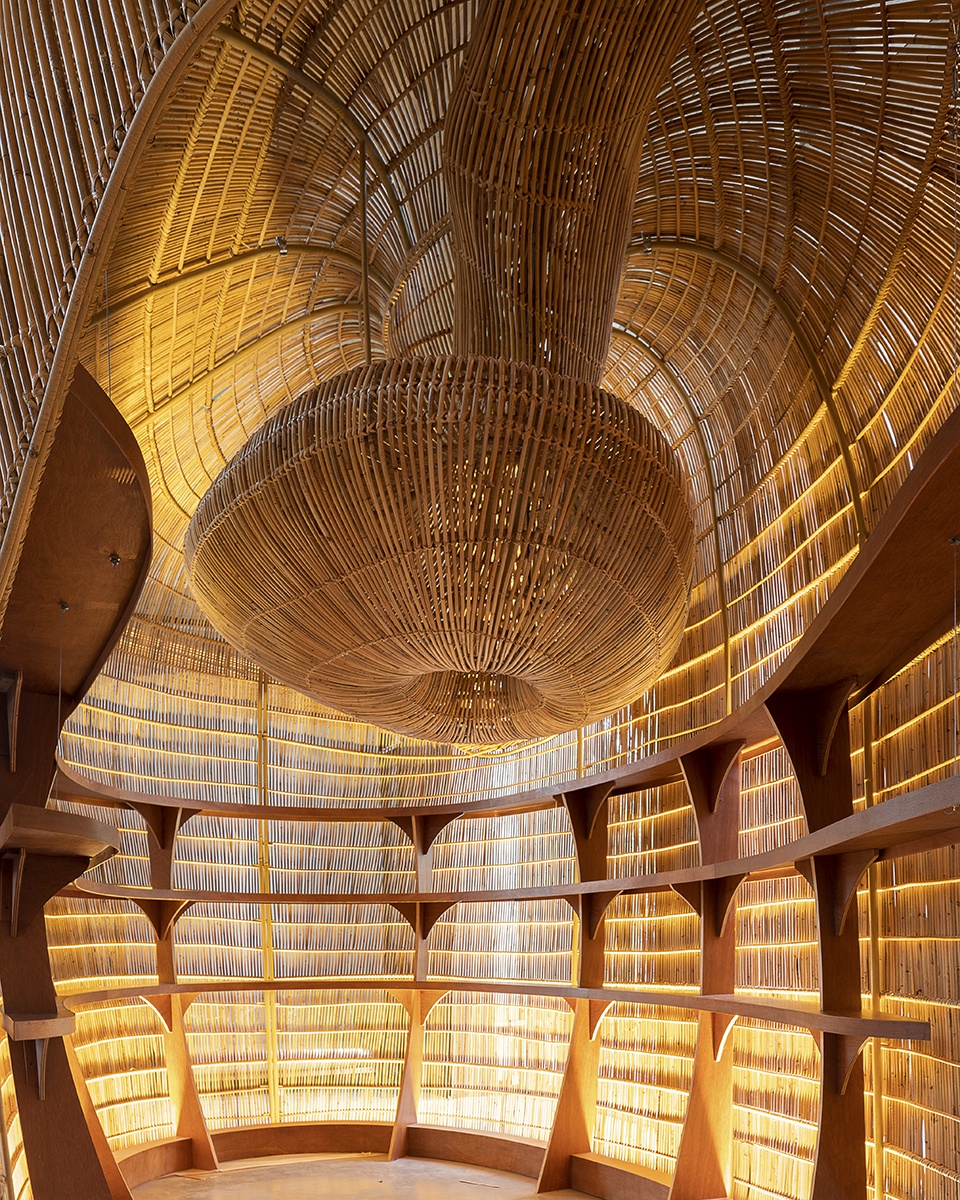
▼展览仓近景,closer view of the pods © William Barrington
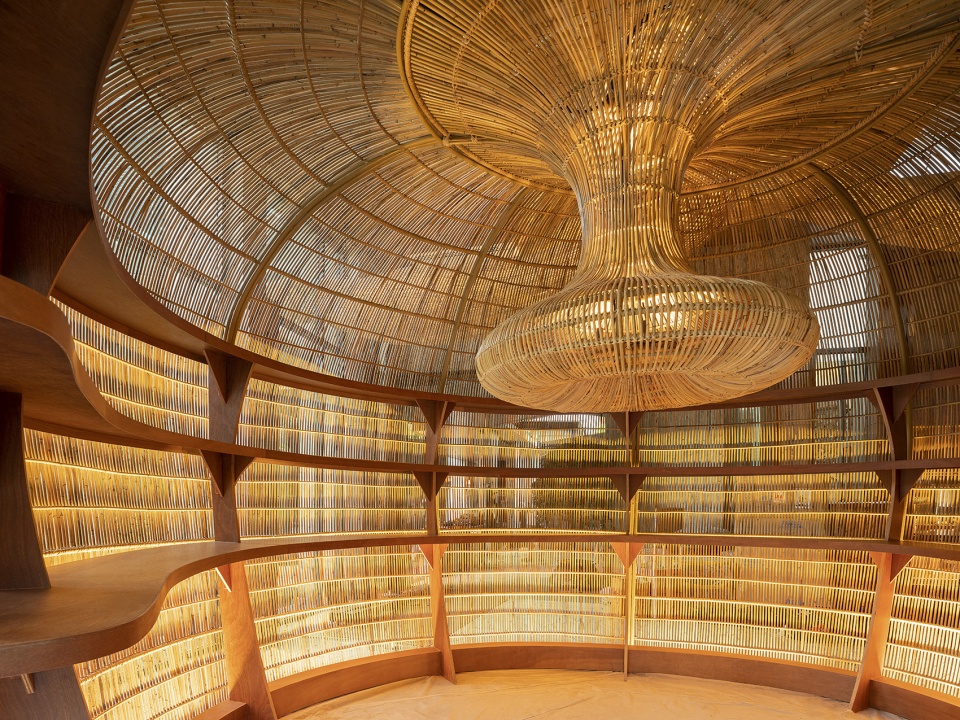

藤条结构的编制与搭建工作开始于疫情隔离期间,因此设计团队首先预制了跨度分别为5米、4米和3.5米三个主要结构单元,之后将舱体单元从工厂运到清迈,并在现场进行组装。照明系统于最后一步安装于藤条之上,灯具和谐地漂浮于不同区域之上,串联了庭院与餐厅,并穿越过展示区域,将室内与室外融合在一起。
Rattan works commenced during the lockdown period with the fabrication of the three main pods, spanning 5m, 4m & 3.5m high respectively. Each batch of work was then transported from the factory to the site in Chiang Mai, and assembled on-site. The rattan lighting structure was the final installment, providing integration between interior and exterior as it floats harmoniously above the different zones, connecting courtyard to dining and through to the display areas.
▼灯具和谐地漂浮于不同区域之上,串联了庭院与餐厅,
it floats harmoniously above the different zones, connecting courtyard to dining © William Barrington
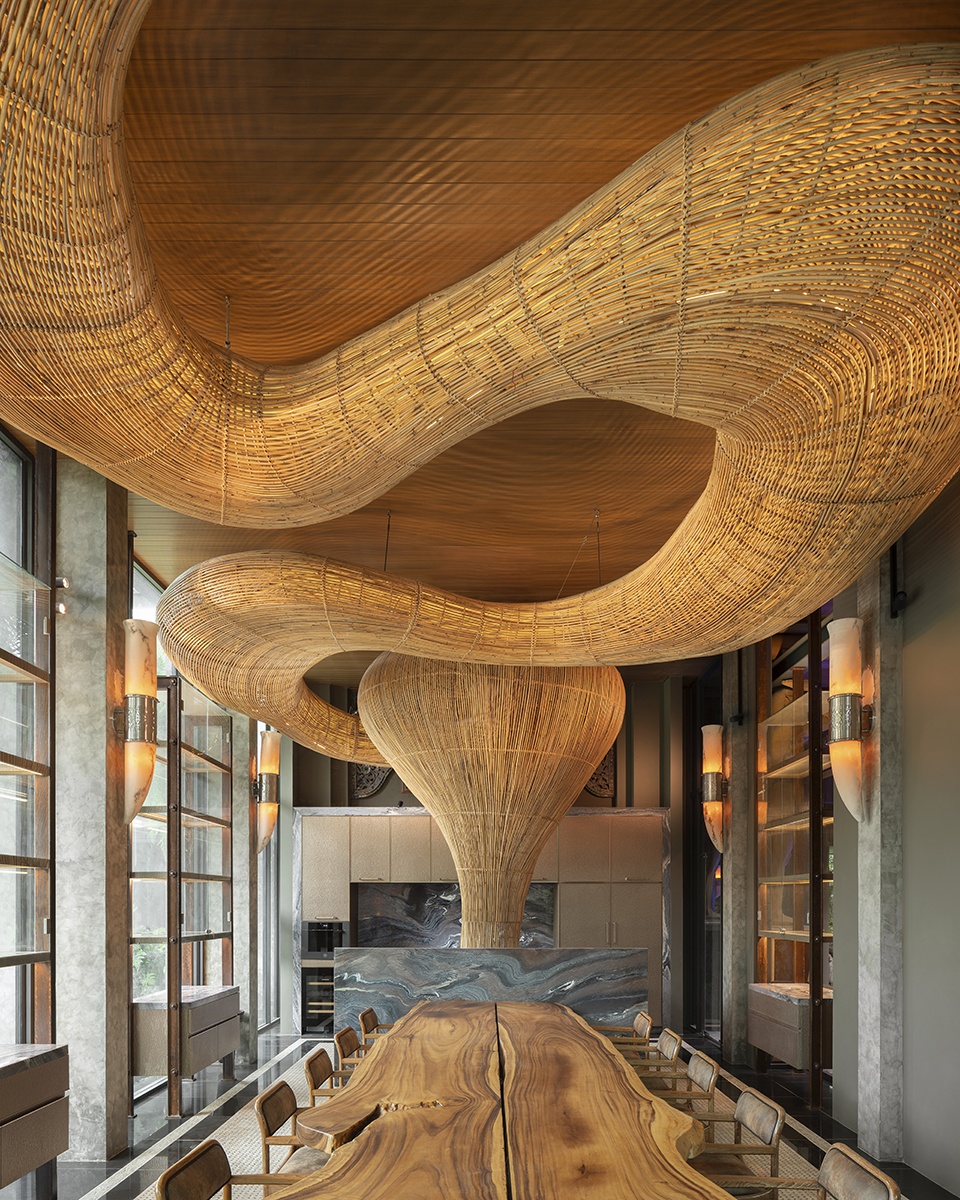
装置呈现出一种流动的形态,无尽的变化和转折形成一条连续的运动通道,将自然的材料与自然的形态完美结合在一起。反过来,也可以说,大自然为人类提供了多用途的天然材料,例如本项目中采用的东南亚各地盛产的藤条。“如果我们能够积极适应我们所处的环境,那么实现建筑的可持续发展并不难。当我们能从大自然中获取我们所需的珍贵材料时,为什么要使用合成的有毒塑料呢?”Keane反问道。
A state of flux can be described of this project: endless change and transformation, a continual passage of movement, guided by nature and the natural forms embodied in the composition of the rattan. In turn, it can be said that nature provides the versatility of natural materials like rattan, grown in abundance all over South East Asia. “It is not hard to be sustainable in construction if we adapt to our environment. Why would we use synthetic, toxic plastics when we have all the noble materials we need at our fingertips?” asks Keane.
▼装置呈现出流动的形态,a state of flux can be described of this project © William Barrington
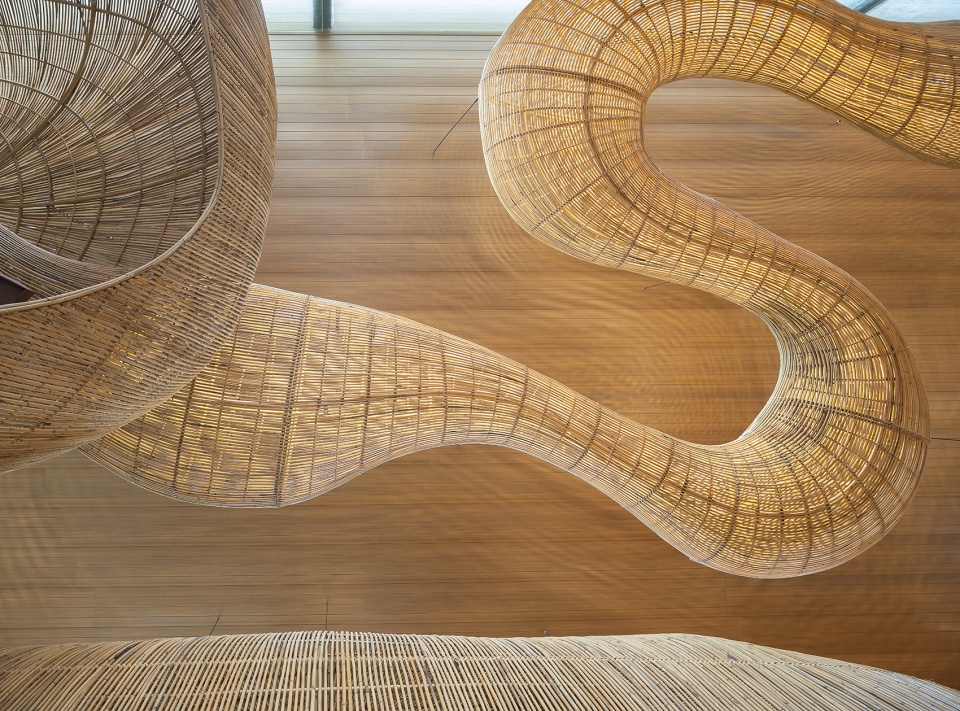
▼灯光与藤条的结合形成有趣的光影,the combination of lights and rattan creates interesting shadows © William Barrington
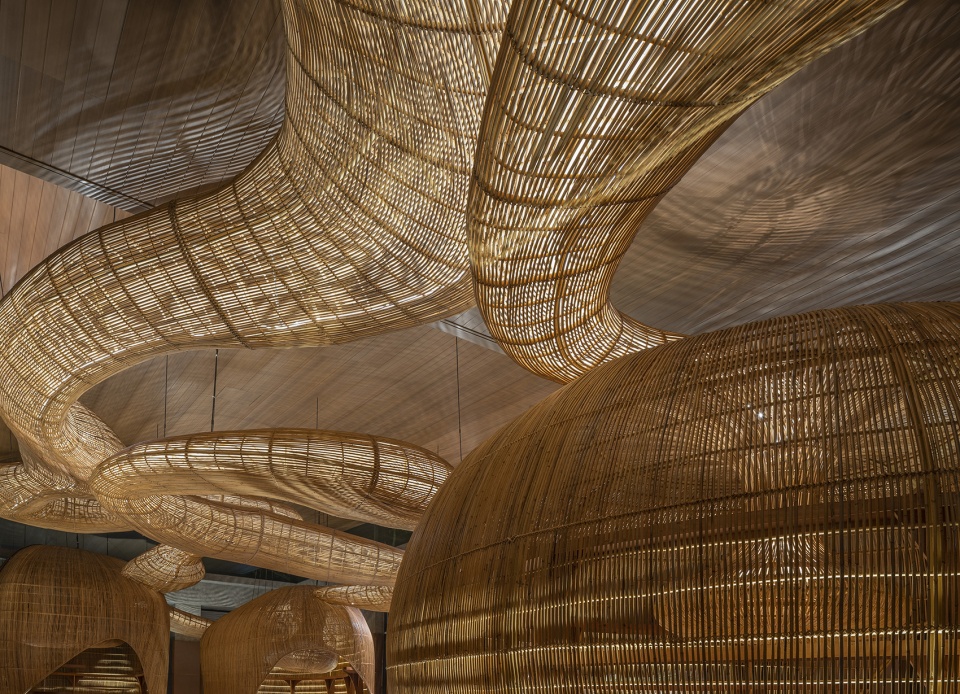
▼细部,details © William Barrington
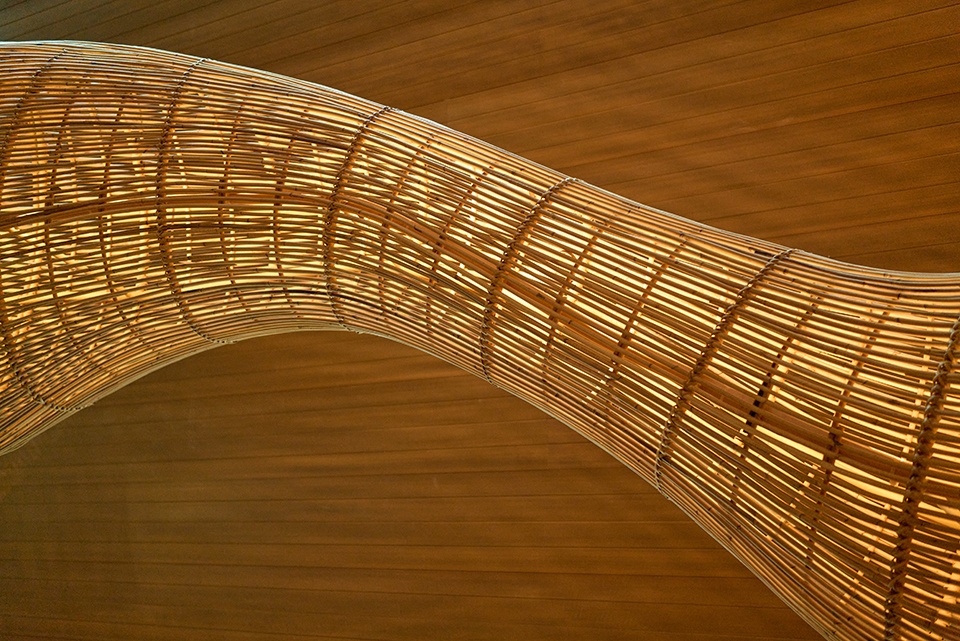
大量艺术画廊的设计经验也让Keane相信:“设计师需要寻找到另一种艺术展示形式,来取代我们都熟悉的传统的、极简的展陈方式,未来的美术馆将是有生命的,它将为人们提供有机的、多维度的体验,并与我们生活的环境更加紧密地联系在一起。艺术应该是生活的一种表现。”如果说,Enter Projects Asia团队想要为这个项目带来的是“生命”,那么最终的落成结果则是这一愿景的最纯粹的体现,它成功地将“活力”、“创新”和“进化”注入了该艺术空间中。
The experience of designing an art gallery, also leads Keane to believe that “designers need to seek alternative forms of art presentation to the clinical, antiseptic displays we are all familiar with. Art galleries for the future will be living organisms and multidimensional experiences, tied more closely to the environments we live in. Art is a representation of life“ states Keane. If it is ‘life’ that he and his team intended to bring to this project, then the result can be said to be the purist embodiment of this: vital, innovative and evolutionary.
▼夜景,night view © William Barrington

▼平面图,plan ©Enter Projects Asia

▼分析图,analysis drawings ©Enter Projects Asia
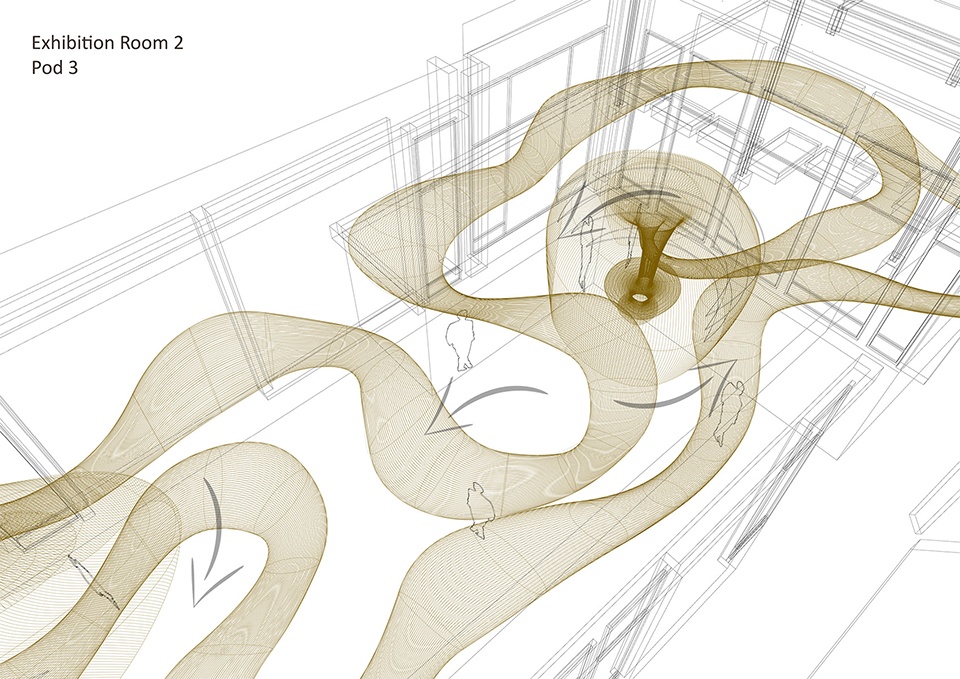
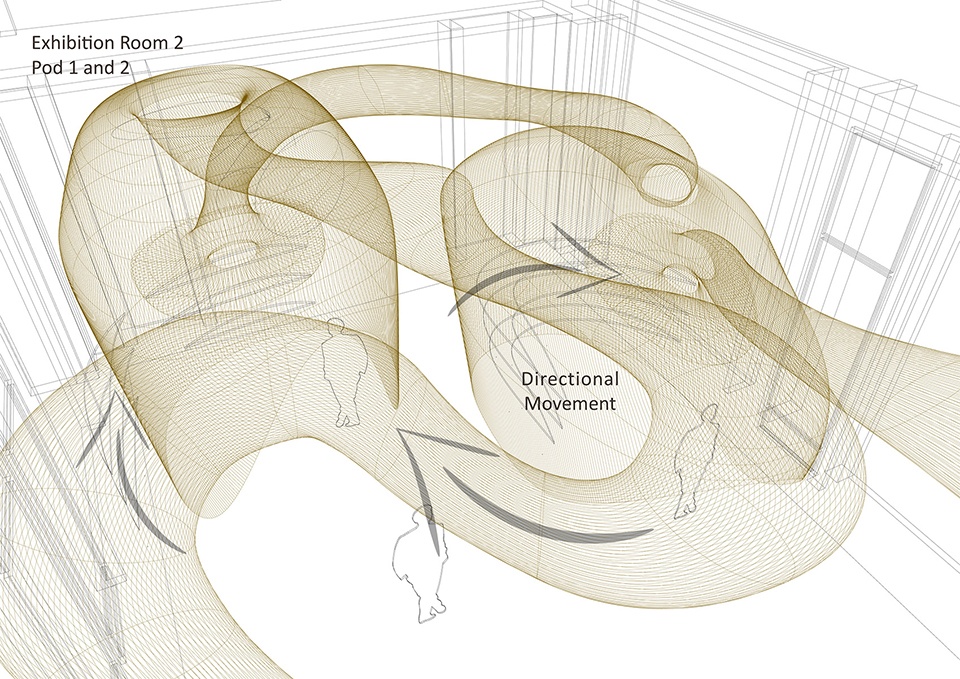
LOCATION: Chiang Mai, Thailand
SIZE: 2000sqm
CLIENT: Private (Non disclosure)
COMPLETE: September 2022
More: Enter Projects Asia
VOOOOD【未来设计】是便捷高效的设计对接平台。
涵盖规划与景观、建筑与室内、乐园与亮化、产品与艺术、别墅全案设计等专业板块;几十个专业分项和上百个细分专业标签;是广受用户和设计行业欢迎的展示对接平台。
WWW.VOOOOD.COM 在行业细分领域广受欢迎。网站1000万+用户;7000+机构和品牌。
VOOOOD未来设计平台传播高含金量的优秀设计作品,赋能优秀设计师和设计品牌。
投稿邮箱:200955326@qq.com
发布设计需求:点击发布
扫描二维码分享到微信